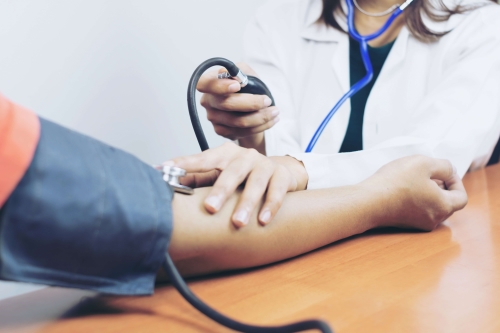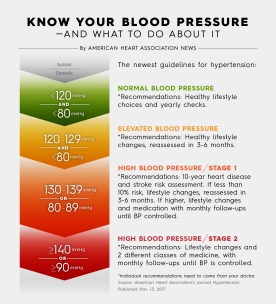 Don’t be surprised at your next doctors visit if you’re now
classified as having high blood pressure, even if you’ve never been
identified as having it before.
Don’t be surprised at your next doctors visit if you’re now
classified as having high blood pressure, even if you’ve never been
identified as having it before.
On November 13, 2017, the American Heart Association (AHA) and the American
College of Cardiology (ACC) redefined high blood pressure (hbp) as a reading
of at least 130/80. Resulting in an increase from 32% (under the previous
definition of 140/90) to 46% of U.S. adults now identified as having high
blood pressure.
Why the change?
“Its focus is prevention,” says Paige Parker, DO of
Catawba Valley Family Medicine – Viewmont. “According to the AHA, the
new guideline is designed to help people take steps to control their blood pressure
earlier.” Paul Whelton, M.D., lead author of the new guideline says,
“We now know that a blood pressure level between 130-139/80-89 doubles
your risk of cardiovascular complications such as a heart attack compared
to people whose blood pressure is under 120/80.” “This is
because damage to blood vessels begins as soon as blood pressure is elevated.
So, although more people may be labeled as ‘hypertensive’,
the goal is to save lives by preventing more strokes, cardiovascular events
and kidney failure,” explains Dr. Parker.
 What are the new guidelines?
What are the new guidelines?
-
Normal - less than 120/80 mm Hg
-
Elevated - top number (systolic) 120-129 and bottom number (diastolic) less than 80
-
Stage 1
hypertension - systolic between 130-139 or diastolic between 80-89
-
Stage 2
hypertension - systolic at least 140 or diastolic at least 90 mm Hg
-
Hypertensive crisis - systolic over 180 and/or diastolic over 120
What changes can you make to manage high blood pressure?
While there’s no cure, using medications as prescribed and making
positive lifestyle changes can help enhance your quality of life and reduce
your risk of heart disease, stroke, kidney disease and more.
The AHA’s recommendations for maintaining the “new normal”
and fighting high blood pressure:
Know your numbers
The best way to know if your blood pressure is in a
healthy or unhealthy range is to
get it checked. If high blood pressure is diagnosed, regular monitoring can help confirm
if you have high blood pressure, detect patterns and alert you to any
changes. It will also show you if the changes you’ve made are working.
Make Lifestyle Changes:
The new guideline is, of course, just that— a guideline. Every individual
is different, so how a patient and his or her provider choose to apply
the guidelines will vary from individual to individual. If you’re
concerned or have questions about your blood pressure and the steps you
can be taking to lower it, talk to your provider. If would like to make
an appointment with Paige Parker, DO at
Catawba Valley Family Medicine – Viewmont
located at 1205 N Center Street in Hickory call 828.324.1699.